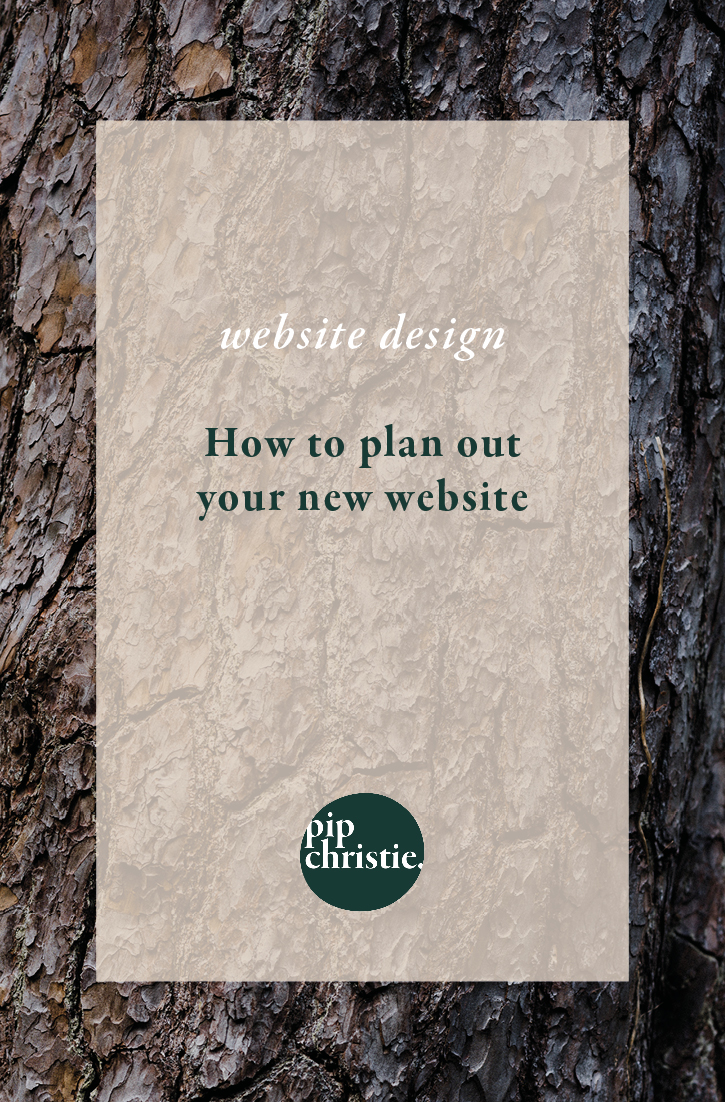How to plan out your new website
You’ve decided you need a new website. Now what?
*fidgets nervously*
It might seem like there’s a lot to do right now. From booking a website designer to writing the copy and finding the perfect brand photographer – it can be an intimidating process. But you know what? Everything’s easier when you have a plan. Especially websites.
So let’s make one, shall we?

Consider the website’s purpose
You should never create a new website simply because someone told you to. Sure, the chances are that if you think you need a new site, then you probably do. But this is about going deeper than that.
I once told my school librarian that I enjoyed a book simply because it made me happy. Whilst that’s great for books, it’s not so great for websites. Especially business websites.
Like anything else in your small business, your website needs to be purposeful. How will it support the rest of your work?
Perhaps your website’s purpose is one of these:
- Fostering brand awareness
- Generating revenue via your online store
- Directing visitors to your email list, where there’ll be nurtured towards a sale
- Priming your audience for a discovery call
Or it might be something totally different and unique to you. After all, your business is unique so it only makes sense that your website will be too.
Identify the feeling you want your website to create
I’m going to say the thing you’re not meant to say: I judge books by their covers. And your dream customers are going to judge your website by its cover too. Because they don’t know that they’re your dream customers yet, you need to show them.
When a visitor lands on your website for the first time, they’re going to form an impression of you, your business and your website in just 50 milliseconds. Don’t worry, that doesn’t mean that you need to run away and hide (I see you, diving under your desk!).
It simply means that you need to decide what sort of feeling you want to create for your visitors, so that your website designer can weave that feeling through your site design.
This will be different depending on your audience type and your service offerings. You might want to inspire your visitors and motivate them towards an aspirational action. Or you may choose to calm and reassure them, as you know that you’re going to be exploring traditionally intimidating topics together. Or it might be a case of soothing and simplifying things, as you need to educate them about your complex work.
This feeling should correspond with the rest of your brand, your copy and content, and the way you do business. You’ll want to make the same type of first impression whether you’re meeting in person, via your website or on social media.
Plan the user journey
Oh hello, your dream customer just landed on your homepage! Woohoo! What would you like them to do next?
This is your user journey.
There’s no point in assuming that they’ll know where to go. You’ll need to guide them through that process more seamlessly than those magic undies that help you ditch the VPL (did I really just write that?! I think I did…)
It’s very rare that you’ll convert a visitor to book a discovery call or make a big purchase the very first time they land on your website. Instead, you’ll need to coax them towards that decision and show them why they need to take the next step in the process.
Sketch out the sitemap
Now that you have an idea about the purpose, feel and journey you want your website to create for your audience, you can get going with the sitemap.
A website’s sitemap is a list of the pages you intend to have on your website, ordered by hierarchy to show how each page is connected to the others. It acts as the foundation for your website and will guide you through the website design process whilst helping you manage your site long into the future. Your website designer will be able to help you with this!
Write the copy
Before you get going with the website design, you’ll need to write your website copy. I’ve talked about this in more detail in this post over here but, in short, your website copy will influence how your site is designed.
By starting with your copywriting, and following it up with the design, you’ll end up with a website that isn’t only designed intuitively to convert its visitors but also delivers a strong and powerful message for your brand.
Prepare the visuals
Depending on how visual your small business is, you’re going to need to set aside a good chunk of time to prep your visuals before you get going with creating your new websites.
Whether you’re working with a designer to create graphics and explainers for your brand, booking a photoshoot to get some new product shots or taking a healthy shot of courage to have your headshot taken, this phase always ends up taking longer than you think it will!
Good visuals can make a website. Which means bad visuals can…break it. There are a whole host of free stock sites out there that are useful for curating imagery to support blog posts and the occasional social media post but if your entire website is made up of stock photography, you’re going to be missing out on those connections that are totally personal to you and your brand. So this phase is really worth investing in, even if that means DIY’ing it and investing your own time for now.
Start warming up your audience
By this point you may be thinking “umm Pip I’ve got enough to do here without you adding one more thing to my list”. I know. It’s a lot.
But if you don’t warm up your audience, they’re not going to be ready for your launch. And I really don’t want you to put all this hard work in, only to pull back the curtains to an empty theatre.
Prime (and grow) your audience in advance by sharing little snippets of this process with them. Whether it’s posting behind the scenes previews onto your Instagram Stories, or giving your email list an early look, you’ll find that your audience’s excitement for you will spur you on to create something that’s even more amazing.
Write your website copy like a pro copywriter (without the pro price tag)
Introducing... the about page roadmap.
You’ll get access to the same copywriting framework I use with my small business clients. So you can have an about page that feels 100% you.



